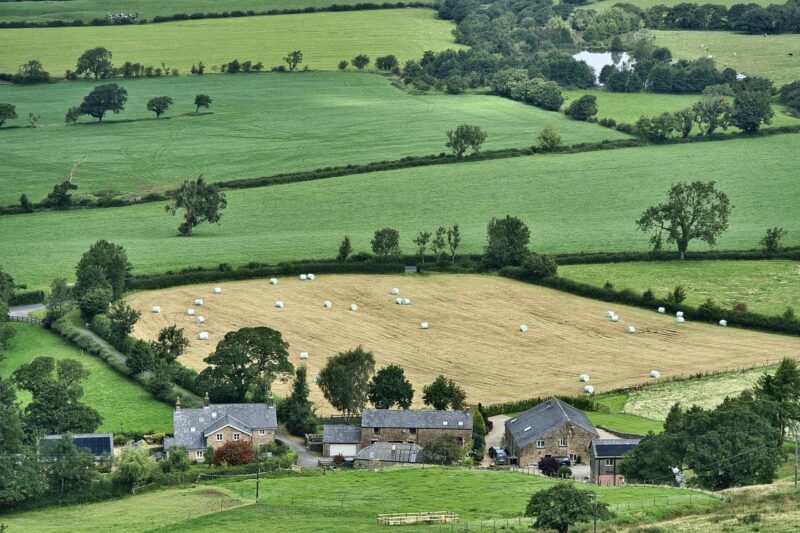How Urban Farming is Revolutionizing the Way Cities Feed Their Populations
November 18, 2024

In the face of rapid urbanization, climate change, and increasingly complex food supply chains, urban farming has emerged as a novel solution to reimagine how cities feed their populations. Urban farming not only enhances food security, but also promotes sustainability, community engagement, and a deeper understanding of food systems. As cities become home to over half of the global population, the need for innovative agricultural solutions has never been more pressing. This article explores the various aspects of urban farming and how it is revolutionizing food production in urban environments.
1. What is Urban Farming?
Urban farming involves the cultivation of, marketing, and distribution of food in and around urban areas. Unlike traditional agriculture, urban farming focuses on small-scale, intensive production methods, allowing city dwellers to grow fresh vegetables, fruits, and even raise livestock on rooftops, backyards, and vacant lots.
Urban farms can take many forms:
- Community Gardens: Shared spaces where residents come together to grow food collectively.
- Rooftop Farms: Utilizing the untapped potential of rooftops to grow crops in otherwise unused spaces.
- Vertical Gardens: Stacked layers of plants that require less land area while maximizing yield.
- Hydroponics and Aquaponics: Soilless growing systems where plants thrive in nutrient-rich water solutions or symbiotic environments with fish.
The beauty of urban farming lies in its adaptability to different environments and contexts.
2. The Benefits of Urban Farming
Urban farming presents a host of benefits, both immediate and long-term, for cities and their inhabitants:
- Food Security: By producing food locally, urban farms reduce dependency on external food systems, enhancing resilience against supply chain disruptions.
- Environmental Benefits: Urban farming reduces carbon emissions associated with the transportation of food, promotes biodiversity, and improves air quality.
- Social Cohesion: Community gardens and urban farms foster social connections among residents, encouraging collaboration and engagement.
- Health Benefits: By providing access to fresh produce, urban farming contributes to healthier diets and lifestyle practices.
- Education: Urban farms serve as practical learning spaces for children and adults alike, teaching lessons about sustainability, ecology, and nutrition.
As cities continue to grow, integrating urban farming into urban planning processes could yield positive outcomes for future generations.
3. Innovative Examples of Urban Farming
Around the world, cities are adopting urban farming practices in creative and innovative ways:
- Brooklyn Grange, New York City: One of the largest rooftop farms in the world, Brooklyn Grange spans over 2.5 acres and provides over 100,000 pounds of organic produce each year.
- Green Spaces, Tokyo: Tokyo has been a pioneer in integrating urban agriculture into its landscape, with numerous examples of rooftop gardens and community farming initiatives.
- Farm-on-a-Flat, Sydney: This ambitious project utilizes an abandoned plot of land to create a thriving urban farm complete with a farmer’s market, café, and educational space.
- Vertical Farm Systems, Singapore: This city-state leverages advanced technology in vertical farming to grow food efficiently in small spaces, making strides towards food self-sufficiency.
These examples highlight how urban farming can blend seamlessly into the urban fabric, transforming wasted or underutilized spaces into productive agricultural areas.
4. Challenges Facing Urban Farmers
Despite its many advantages, urban farming is not without challenges:
- Land Access: Securing land for farming in urban areas can be exceptionally difficult due to high real estate costs.
- Regulatory Barriers: Local zoning laws and regulations can hinder urban farming initiatives, limiting their potential growth.
- Resource Availability: Urban farmers must contend with potential resource shortages, including water and nutrient supplies.
- Climate Adaptability: Urban farms are at the mercy of changing climates and weather patterns, necessitating innovative solutions to mitigate these impacts.
Addressing these challenges requires collaboration among city officials, community organizations, and urban farmers to create conducive policies and resource support systems.
5. The Future of Urban Farming
The future of urban farming looks promising as cities around the globe recognize the significance of local food systems. With the integration of technology, such as smart irrigation systems and IoT devices, urban farming can continue to thrive and scale significantly.
Some emerging trends to watch include:
- Agri-Tech Integration: The incorporation of technology in farming practices is set to optimize operation efficiency and crop yield.
- Policy Support: As awareness grows about food security and sustainability, supportive policies for urban agriculture will likely become more prevalent.
- Community Engagement: The role of community-driven initiatives will likely increase as citizens recognize the value of locally sourced food.
Ultimately, a collaborative approach involving governments, businesses, and citizens will be crucial for the enduring success of urban farming initiatives.
Conclusion
Urban farming has revolutionized how cities feed their populations by creating sustainable, resilient food systems that empower communities. Through innovation and collaboration, urban farmers are transforming urban landscapes into thriving green spaces while addressing pressing global challenges like food security and environmental degradation. As we advance further into the 21st century, urban farming holds the key to sustainable living in cities, paving the way for a healthier and more equitable future for all residents.






